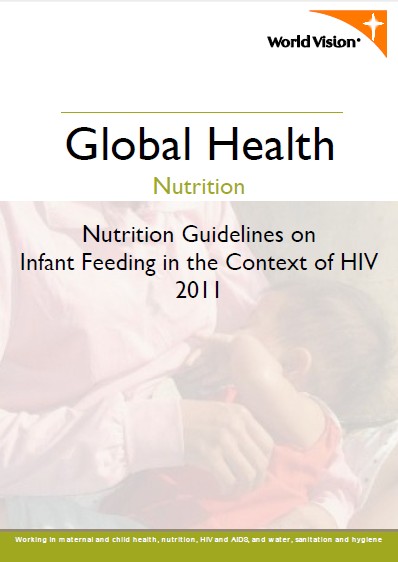
The WHO’s 2010 guidelines on infant feeding in the context of HIV replace the previous guidelines of 2006. The guidelines reflect recent research and consider potential risks and benefits, feasibility and cost of infant feeding. World Vision offers this summary of the WHO 2010 Guidelines for your reference, which also highlights the implications of this guidance for World Vision programmes. You can also download the entire WHO 2010 Guidelines.
The risk of transmitting HIV through breast milk has presented the health community and HIV-positive mothers in developing countries with a difficult dilemma. While no mother wants to risk passing on the virus to her child, completely avoiding breastfeeding is not a safe or feasible option for most HIV-positive mothers in resource-poor areas. Using infant formula and other breast milk substitutes in such situations can greatly increase the child’s risk of illness and death due to other preventable causes, including malnutrition, pneumonia and diarrhoea.
Implementing the new recommendations based on the latest research can reduce mother-to-child transmission risk from 35 per cent to less than five per cent in breastfeeding populations.[1]
Even without antiretroviral drugs (ARV), HIV transmission rates are low during the breastfeeding period. Moreover, recent research shows that exlusive breastfeeding for up to six months was associated with greater than 50% reduced risk of transmission of HIV compared to non-exclusive breastfeeding in three large cohort studies in Cote d'Ivoire, South Africa and Zimbabwe.[2]
Weighed against the low (less than 1% per month) but ongoing risk of HIV transmission through breastmilk,[3]breastfeeding substantially reduces the risk of infant mortality from other infectious diseases and malnutrition on average by four to six-fold in the first six months and close to two-fold in the second six months of life.[4]
[1] Rapid Advice Use of antiretroviral drugs for treating pregnant women and preventing HIV infection in infants Version 2, WHO 2010
[2] HIV and Infant Feeding New evidence and programmatic experience. Report of a Technical Consultation, Geneva, Switzerland, 25–27 October 2006. Held on behalf of the Inter-agency Task Team (IATT) on Prevention of HIV Infections in Pregnant Women, Mothers and their Infants. WHO, 2007.
[3] The BHITS Group. Late Postnatal Transmission of HIV-1 in breast-fed children: An individual patient data meta-analyses. Journal of Infectious Diseases 2004, 189:2154–2166.
[4] WHO Collaborative Study Team on the role of breastfeeding on the prevention of infant mortality, effect of breastfeeding on infant and child mortality due to infectious diseases in less developed countries: a pooled analyses. Lancet, 2000, 355:451–455.




















